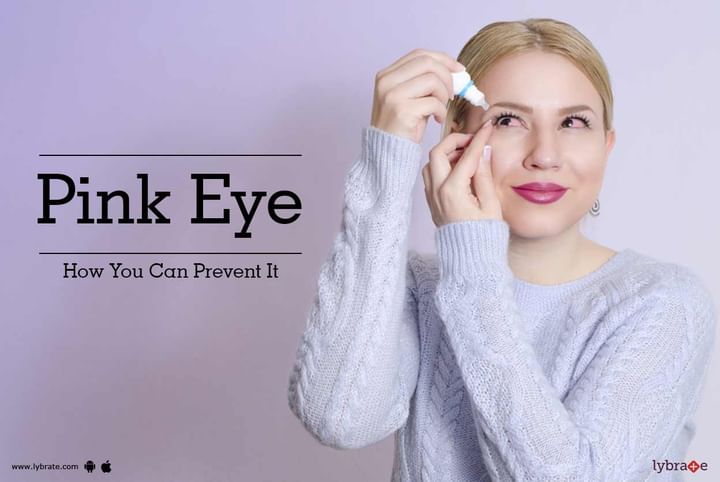Get the App
For Doctors
Login/Sign-up
Last Updated: Oct 23, 2019
BookMark
Report
Pink Eye - How You Can Prevent It
Dr. Tejas D. ShahOphthalmologist • 38 Years Exp.MBBS, MS - Ophthalmology, Diploma in Ophthalmology , Fellowship in Cornea and Anterior Segment
An inflammation resulting in the formation of a thin layer inside the eyelids or the white part of the eyeball is known as pink eye or conjunctivitis. This condition turns the eye ball into pinkish color, hence the name. Based on the severity of the infection, either one or both eyes get affected.
What are the common symptoms?
- Medium to heavy swelling of the eye
- Eye crusting after sleep
- A burning sensation
- Irritation, itching or blurred vision
- Redness and increased sensitivity of the eye
Different kinds of conjunctivitis:
- Allergic Conjunctivitis: This is the type of conjunctivitis that results from eye irritants such as animal dander, dust particles and pollen. This is not infectious in nature. Treatment prescribed by ophthalmologist includes eye drops and non-steroidal medications. It is advised to keep the eye moist till it gets cured.
- Viral Conjunctivitis: As the name suggests, this kind of conjunctivitis is caused due to a viral attack. Sadly though, antibiotics don’t work and there is no particular medication for this type of conjunctivitis. Like common cold, viral conjunctivitis runs its course in a span of 1-2 weeks. Since virus is contagious, it is necessary to ensure that the microbes don’t spread. Some common prevention measures are listed below:
- Eye cosmetics should be abandoned till the conjunctivitis is cured
- Hands should be frequently cleaned
- Hand and eyes should not be in contact
- Frequent change of pillow covers, towels and clothes
- Swimming should be completely avoided
- Spectacles in place of lens should be used until advised otherwise by a medical practitioner
- Bacterial Conjunctivitis: This kind of conjunctivitis is caused by the streptococcal bacteria and has potential to cause real damage if proper medication is not taken on time. This is highly contagious. Prescription often includes antibiotic drop and ointments. The medication is prescribed for 2-3 weeks depending on the level of bacterial spread in the eye. It is very essential to complete the full course of medication to avoid recurrence. Prevention measures as stated above should be strictly followed.
- Chemical conjunctivitis: Eye irritants such as chlorine cause this conjunctivitis. Frequent swimmers often get affected by this type of eye infection. Topical steroids are prescribed to cure this kind of infection. Immediate medical attention is required to avoid lasting injury to the eye.
How to prevent pink eye?
While prevention is the best way to refrain from conjunctivitis, some basic hygiene checks are very important. Here is a list of must do’s:
- Do not share personal items such as combs, towels and toiletries.
- Stay away from a conjunctivitis infected patient
- Using of goggles while swimming
- Frequent usage of hand sanitizer and hand wash. If you wish to discuss about any specific problem, you can consult an ophthalmologist.



+1.svg)
